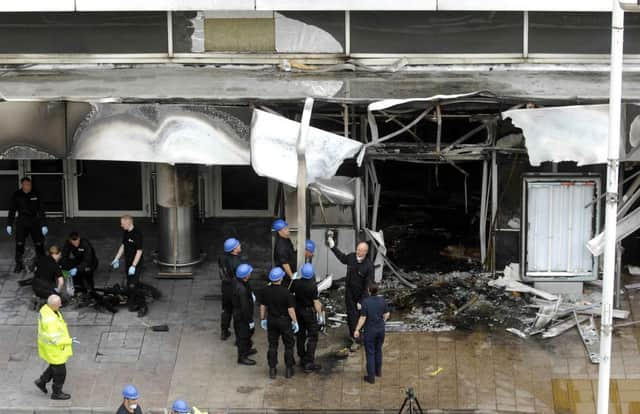Tim Ripley: Terrorist groups have learned from mistakes


Vehicle-borne terrorism took a new twist on Thursday night with the Nice attack but the potential of such attacks had long been recognised by security experts. Glasgow and Edinburgh airports have steel bollards outside their terminals to stop a repeat of the 2007 Glasgow attack. In London, bollards and concrete barriers have surrounded Parliament, Whitehall and other government buildings since 2001.
The Nice attack takes vehicle-borne terrorism to a new level and will be generating a major re-think among counter-terrorism chiefs in Edinburgh and London. No longer is the threat just against fixed targets but anywhere that a large crowd of people could be gathering.
Advertisement
Hide AdAdvertisement
Hide AdSecurity plans for open-air events along the Royal Mile in Edinburgh during next month’s festival or the Hogmanay party on Princes Street must all now be under review. The approaches to large sports stadiums, conference centres and music venues are also high on the list of locations needing additional protection.
Solutions to Nice-style attacks could be mobile concrete barriers on key vehicle access points or the installation of tyre-slashing devices to immobilise threatening vehicles.
For security planners, the dilemma will be what do after they have installed counter-measures to defeat a repeat of the Nice attack. Jihadi terrorist groups – first al Qaeda and now Islamic State – have shown a remarkable ability to learn from their mistakes and to keep one step ahead of the West’s security and intelligence agencies.
The biggest fear is that jihadi terrorists will move on from attacking prestige targets in major cities to sofer targets – locations away from cities such as London. Here security will be less intense and the general public less alert to anything suspicious. The proliferation of mobile phone cameras and social media means an attack in rural Fife will generate as much publicity as a terrorist outrage in Westminster or Washington DC. The type of weapon involved is also likely to be very new and different to further confound efforts to establish security cordons. Surprise is the terrorist’s best weapon, allowing them to slip past security forces who become conditioned to react to the previous strike, rather than to get one step ahead of the threat.
Western societies, including Scotland’s, are just too open to be properly defended 100 per cent on a 24/7 basis. The Nice attack shows that jihadi terrorists are always looking for new and innovative ways to get around security.
l Tim Ripley is a defence analyst and commentator